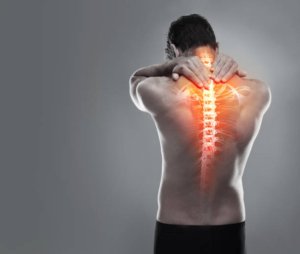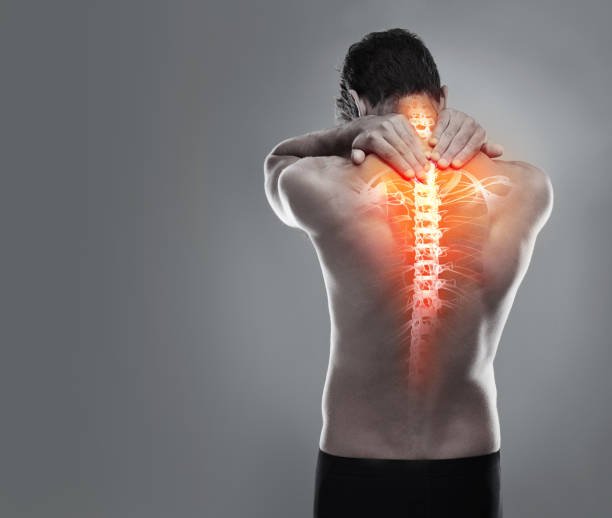Chronic Pain Management ,The greatest evil is physical pain.” These words from Saint Augustine highlight how much chronic pain can hurt our lives. For many in Australia, managing chronic pain is a constant battle. It affects their health, mood, and how they connect with others.
As physiotherapists, we aim to help our patients find ways to ease their pain. In this article, we’ll share our methods for tackling chronic pain. We’ll talk about the need for custom treatment plans, the benefits of exercise and healthy eating, and the importance of mindfulness and support.
We want to give you the tools and knowledge to manage your pain better. This article is for anyone looking to start physiotherapy or improve their current pain management. We hope to offer you valuable insights and practical advice to help you find relief.

Key Takeaways
- Chronic pain can have a significant impact on physical, emotional, and social wellbeing
- Physiotherapists play a crucial role in developing individualised treatment plans for chronic pain management
- Exercise, nutrition, mindfulness, and support systems are key components of effective pain relief strategies
- Empowering patients with knowledge and tools is essential for taking control of chronic pain
- Persistence and celebrating small victories are important for staying motivated in the pain management journey
Understanding Chronic Pain and Its Impact
Chronic pain affects millions of Australians. It’s different from acute pain, which goes away in weeks or months. Chronic pain lasts longer, often over three months. This can deeply affect a person’s mental health and daily life.
Defining Chronic Pain
The chronic pain definition is pain that lasts longer than expected. It can come from injuries, surgeries, or health issues like arthritis. Chronic pain can feel like aching, burning, or stabbing, and can make you feel stiff.
The Psychological Effects of Chronic Pain
Chronic pain can really hurt your mental health. The pain and its limits can make you feel frustrated, angry, and helpless. These feelings can grow into deeper psychological effects, like depression and anxiety.
| Psychological Effect | Description |
|---|---|
| Depression | Persistent feelings of sadness, hopelessness, and loss of interest in activities |
| Anxiety | Excessive worry, restlessness, and difficulty relaxing |
| Sleep disturbances | Difficulty falling asleep, staying asleep, or experiencing restful sleep |
| Decreased self-esteem | Negative self-image and reduced confidence due to limitations caused by pain |
“Chronic pain is not just a physical experience; it can permeate every aspect of a person’s life, including their emotional well-being and sense of self.”
Its Influence on Daily Life
Chronic pain can change your life a lot. Simple tasks can become hard or impossible. It can affect:
- Work and productivity
- Relationships with family and friends
- Participation in hobbies and social activities
- Overall quality of life
As physiotherapists, we see how chronic pain affects many areas of life. We aim to treat the whole person, not just the pain. This includes the emotional and social challenges that come with chronic pain.
Our Physiotherapy Approach
At our physiotherapy clinic, we know how hard chronic pain can be. Our team of skilled physiotherapists is here to help you. We focus on both the physical and emotional sides of pain.
What to Expect in Your First Session
In your first visit, our physiotherapist will carefully check your condition. They will:
- Talk about your health history and pain
- Do a physical check to find tight spots or weak areas
- Look at how you stand, walk, and move
- Set goals for managing your pain and getting better
We think talking openly is key to a good treatment plan. Your first session is a chance for us to listen and answer your questions. We aim to build a strong relationship based on trust and understanding.
Techniques We Use to Manage Pain
Our physiotherapists use many proven methods to help with chronic pain. Some of these include:
| Technique | Benefits |
|---|---|
| Manual therapy | Soft tissue mobilisation, joint manipulation, and massage to reduce muscle tension and improve flexibility |
| Exercise prescription | Tailored stretching and strengthening exercises to enhance muscle function, stability, and endurance |
| Postural correction | Strategies to optimise your posture and reduce strain on your body during daily activities |
| Pain education | Helping you understand the mechanisms of pain and develop coping strategies to manage flare-ups |
Our goal is to empower you with the knowledge and tools to take an active role in your pain management journey.
We mix these techniques with a personal touch to help you feel better. We aim to lessen your pain, improve your function, and boost your life quality. Together, we’ll work to break the cycle of chronic pain and help you enjoy life again.
The Importance of an Individualised Plan
At our physiotherapy clinic, we know everyone’s pain story is different. That’s why we focus on making a treatment plan just for you. This way, we can help you manage your pain better and take back control of your life.
Tailoring Treatment to Your Needs
When you visit us for chronic pain, we listen carefully to your situation. We look at:
- The type and location of your pain
- Your medical history and any underlying health conditions
- Your lifestyle, including work and leisure activities
- Your personal goals and preferences for treatment
We use this info to craft a plan that fits your needs perfectly. As Robin McKenzie said:
The key to effective treatment is understanding the patient as an individual, not just a set of symptoms.
Factors We Consider in Treatment
We consider many factors when making your treatment plan. These include:
| Factor | Consideration |
|---|---|
| Physical therapy | Exercises and manual techniques to reduce pain and improve function |
| Lifestyle modifications | Changes to diet, sleep habits, and stress management |
| Psychological support | Strategies to cope with the emotional impact of chronic pain |
| Education | Helping you understand your condition and empowering you to manage it effectively |
By looking at all these factors, we aim to give you a treatment plan that works best for you. This way, you have a good chance of overcoming chronic pain.
Exercise: A Vital Component
At our physiotherapy clinic, we believe exercise is key for managing chronic pain. By adding specific movements to your day, you can lower pain and boost function. Let’s look at the exercises we suggest and how they help with pain relief.
Types of Exercises We Recommend
We focus on three main types of exercises for chronic pain:
- Stretching to increase flexibility and range of motion
- Strengthening to build muscle support and stability
- Low-impact aerobic activities to improve circulation and endurance
Our physiotherapists will create a custom exercise plan for you. They’ll teach you each movement, ensuring you do it right for the best results.
How Movement Affects Pain Levels
Studies show regular movement can greatly reduce chronic pain. Physical activity releases endorphins, which are natural pain relievers. These chemicals interact with your brain, reducing pain and improving mood.
Exercise also boosts blood flow and oxygen to injured areas, aiding healing and reducing swelling. As you get stronger and more flexible, your body can better support itself. This reduces strain on painful joints and muscles.
Creating a Balanced Routine
To get the most from exercise therapy, a balanced routine is crucial. We suggest mixing stretching, strengthening, and aerobic exercises to cover all aspects of your health.
Here are tips for a well-rounded exercise routine:
- Begin slowly and gradually increase workout intensity and duration
- Listen to your body and avoid overdoing it, especially on tough days
- Include rest days for recovery and adaptation
- Stick to a regular exercise schedule, aiming for sessions most days of the week
Finding the right balance is key to success with exercise therapy. Our physiotherapists will support you every step of the way. They’ll guide and adjust your routine to help you achieve effective pain relief and a better quality of life.
Nutrition’s Role in Pain Management
At our physiotherapy clinic, we know how important nutrition is for managing chronic pain. Eating the right foods can help your body heal and reduce pain. Let’s look at how your diet affects your pain and health.
Foods That May Help Alleviate Pain
Some foods can help lower inflammation and ease chronic pain. Here are a few examples:
- Omega-3 fatty acids: These are found in fatty fish like salmon, sardines, and mackerel. They’re also in flaxseeds and walnuts. Omega-3s are great for fighting inflammation.
- Antioxidant-rich fruits and vegetables: Foods like berries, leafy greens, and sweet potatoes are full of antioxidants. These help fight oxidative stress and inflammation.
- Spices and herbs: Turmeric, ginger, and garlic have compounds that can reduce inflammation and offer pain relief.
The Impact of Inflammation on Pain
Chronic inflammation is a big problem for persistent pain. It can damage tissues and make pain worse. Eating an anti-inflammatory diet can help control inflammation and lower pain.
“A growing body of evidence suggests that adopting an anti-inflammatory eating pattern may play a role in pain relief.”
– Dr. David Reuben, Professor of Medicine, UCLA
Hydration and Its Importance
Drinking enough water is key for managing chronic pain. Dehydration makes your body more sensitive to pain. Drinking water helps keep joints lubricated, reduces inflammation, and supports your body’s functions. Try to drink water all day and avoid alcohol and caffeine.
| Daily Water Intake Recommendations | Men | Women |
|---|---|---|
| Sedentary lifestyle | 2.6 litres | 2.1 litres |
| Active lifestyle | 3.0 litres | 2.4 litres |
By focusing on nutrition, choosing anti-inflammatory foods, and staying hydrated, you can help your body heal and reduce pain. Our physiotherapy team can help you make dietary choices that fit your treatment plan for better pain relief.
Mindfulness and Pain Management
We take a holistic view to pain management at our physiotherapy practice. Physical therapy is key, but mindfulness is also powerful. It helps you see pain differently, making it less of a burden in your life.
Techniques We Encourage
We suggest our patients use various mindfulness techniques every day. These include:
- Deep breathing exercises
- Body scans
- Meditation
- Gentle yoga
These methods help you stay in the present, not stuck on pain. Regular mindfulness practice teaches you to watch pain without judgment. This lessens its emotional and psychological effects.
The Science Behind Mindfulness
Studies show mindfulness changes how the brain handles pain signals. It activates areas linked to pain control and emotional balance. This can make pain feel less intense and boost your overall mood.
“Mindfulness meditation has been shown to reduce chronic pain by 57 percent, and some experienced meditators can reduce it by over 90 percent.” – Dr. Fadel Zeidan, Wake Forest Baptist Medical Center
Tips to Incorporate Mindfulness Daily
Adding mindfulness to your daily life is easy. Here are some easy tips to start:
- Make time for 10-15 minutes of mindfulness each day
- Choose a quiet, comfy spot where you won’t be interrupted
- Focus on your breath, noticing each inhale and exhale
- If your mind drifts, gently bring it back to your breath
- Be kind to yourself and don’t judge your thoughts or feelings
Like any skill, mindfulness needs practice. By adding these techniques to your daily routine, you can start to feel the benefits of a more mindful approach to pain.
Building a Support System
Managing chronic pain is easier with a strong support system. At our physiotherapy practice, we know that treating pain isn’t just about physical help. It’s also about emotional and social support. We’ll look at how you can build a network to help you deal with chronic pain.
The Role of Family and Friends
Your loved ones are key in your pain management journey. They offer emotional support by listening and encouraging you. They can also help with daily tasks, so you can focus on getting better.
Joining Pain Management Groups
Meeting others with similar experiences is very helpful. Pain management groups are a safe place to share and learn. You can find support and new ways to cope with your pain.
- Learn strategies from those who’ve been through it
- Feel less alone in your journey
- Gain a sense of control over your pain
Professional Support Options
Family, friends, and groups are great, but professional help is also valuable. Here are some options:
| Professional | How They Can Help |
|---|---|
| Counsellor or Psychologist | Help you cope with pain’s emotional effects, like stress and anxiety |
| Pain Management Clinic | Provide a team approach to managing pain, including medical and psychological support |
| Occupational Therapist | Help you adjust your daily activities and work space to reduce pain |
“The most beautiful people we have known are those who have known defeat, known suffering, known struggle, known loss, and have found their way out of the depths. These persons have an appreciation, a sensitivity, and an understanding of life that fills them with compassion, gentleness, and a deep loving concern. Beautiful people do not just happen.” – Elisabeth Kübler-Ross
Building a support system takes time and effort. But it’s crucial for managing pain. Don’t be afraid to ask for help. You’re not alone in this journey.
Monitoring Progress and Adjusting Strategies
At our physiotherapy clinic, we think it’s crucial to watch how you’re doing. We check your symptoms and how well your treatment is working. This helps us change your plan if needed.
Keeping a Pain Diary
A pain diary is a powerful tool for managing pain. It’s about writing down your symptoms, what makes them worse, and how treatments help. By doing this, you can:
- Find patterns in your pain
- See what makes your pain worse
- See if treatments are working
We ask our patients to keep a pain diary. Sharing it with us helps us make your treatment even better. We can then make any treatment adjustments needed.
Periodic Evaluations We Recommend
We also suggest regular checks to see how you’re doing. These checks help us make sure you’re getting the best care. They might include:
- Checking how you move, how strong you are, and how flexible you are
- Using special scales to measure your pain
- Seeing how well you can do everyday things
- Looking at your pain diary and what you’ve told us
These regular checks help us celebrate your progress and find areas to improve. We can then adjust your treatment to help you manage your pain better.
When to Change Your Approach
Our treatment plans are made just for you to help with pain. But sometimes, you might need to try something new. You might need to change your plan if:
- Your pain doesn’t get better or gets worse
- Things that used to help don’t work as well anymore
- Your symptoms or health changes a lot
- You find it hard to do everyday things or go to therapy
Remember, managing pain is a journey. What works for one person might not work for another. By watching your progress and being open to changes, you can find what works best for you.
At our physiotherapy clinic, we’re here to help you every step of the way. We use progress monitoring and treatment adjustments to help you overcome chronic pain and improve your life.
Moving Forward: Staying Motivated
As you move forward in your pain management journey, staying motivated is key. Chronic pain can be tough, but the right mindset and strategies can help. You can find lasting relief and improve your life quality.
Setting Realistic Goals
Setting realistic goals is a big part of staying motivated. Work with your physiotherapist to set specific, measurable, and achievable targets. Breaking your journey into smaller milestones helps you stay on track and celebrate your progress.
Celebrating Small Victories
It’s vital to celebrate the small victories in your pain management journey. Whether it’s completing a tough exercise or reducing pain levels, acknowledge these successes. Celebrating these moments boosts your motivation and keeps you engaged in your treatment plan.
The Importance of Persistence
Persistence is crucial for long-term success in managing chronic pain. There will be setbacks, but keep a positive outlook and keep working towards your goals. Remember, progress may be slow, and you’ll have good and bad days. Stay committed to your treatment plan and work closely with your physiotherapist to overcome obstacles and find lasting relief.







